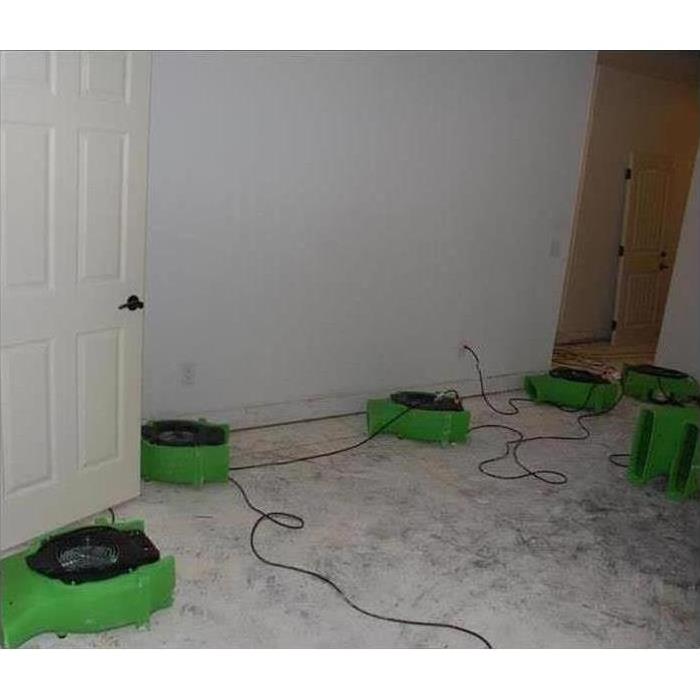Cleaning After a Storm
2/25/2020 (Permalink)
When a storm causes damage to your home, you may feel overwhelmed and unsure how to start the cleanup process. Due to flooding and other factors, however, there are several ways in which cleaning after a storm often differs from cleaning after other types of damage from water.
1. Water Is Removed
Whereas a pipe break may only require a certain area of the house to be cleaned, and it likely will not result in a major flood, storms can cause extensive water damage. Standing flood water can often be contaminated, meaning that removing the water can be hazardous if not done correctly. It’s important to use protective equipment, like masks, boots, gloves and other items when removing water that is polluted.
2. Home Is Dried
Once water is removed from the home after a storm, it’s important to dry out the area. Keep the home dry will help prevent mold growth. However, it’s important to make sure the right equipment is used while drying the area out after flooding. Using a vacuum cleaner or putting on a fan when a ceiling is drooping can be hazardous as well as ineffective. Once the home is dry, the next process of cleaning and restoration can begin.
3. Sanitization Is Required
Since storm floodwater is often contaminated, a home that has sustained flood damage is often typically thoroughly sanitized. In addition to cleaning items within your home, which may include furniture, clothes or other personal belongings, the home itself may require special cleaning. Often, the process of disinfecting a home includes eliminating the causes of unpleasant odors as well as eliminating odors themselves, and the use of disinfectants as well as the use of antibacterial treatments.
Knowing the differences between pipe burst flooding and a storm water damage can give you a better idea of what to expect and where to start the cleanup and restoration process. You could find it useful to work with water and storm damage professionals as you begin to restore your home.





 24/7 Emergency Service
24/7 Emergency Service
